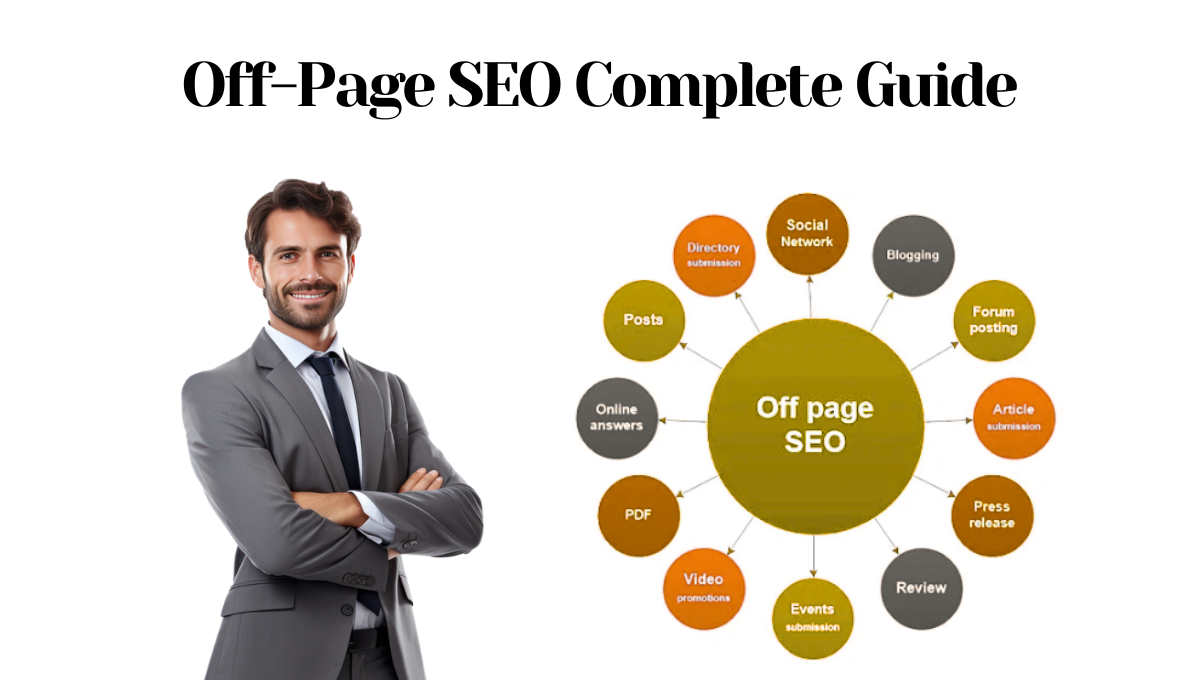A 2024 HubSpot analysis reveals that 68% of marketers believe email is the most effective way to share content, while 75% of people rarely go beyond the first page of search results. This shows a very important point: combining email marketing with SEO is not just a choice; it’s a strategy.
This powerful combination enables firms to reach a wider audience and tailor experiences for each user on a large scale. SEO email marketing ensures that material is both easy to find and useful by matching search behaviour with personalised messages. This integrated approach is one of the best ways to develop brand authority, trust, and long-term growth.
What is Email Marketing?
Email is still one of the few marketing methods that lets you reach your audience directly and without interruption, even though there are many others. When done right, it can be a great way to send relevant content, nurture leads, and get them to take action.
Email marketing is a way to distribute tailored communications to a group of subscribers using email. These emails might be anything from newsletters and promotional offers to product updates and transactional communications. The main goals are to connect with people, teach them, and get them to take action. The fact that this channel can send personalised content straight to people who have shown interest in a brand is what makes it unique. This leads to increased engagement rates.
One of the best things about email marketing is that it is both cheap and easy to measure. This lets marketers improve their tactics based on open rates, click-through rates, and conversion metrics. Brands can also use email automation solutions to make their efforts bigger while still being relevant and personable.
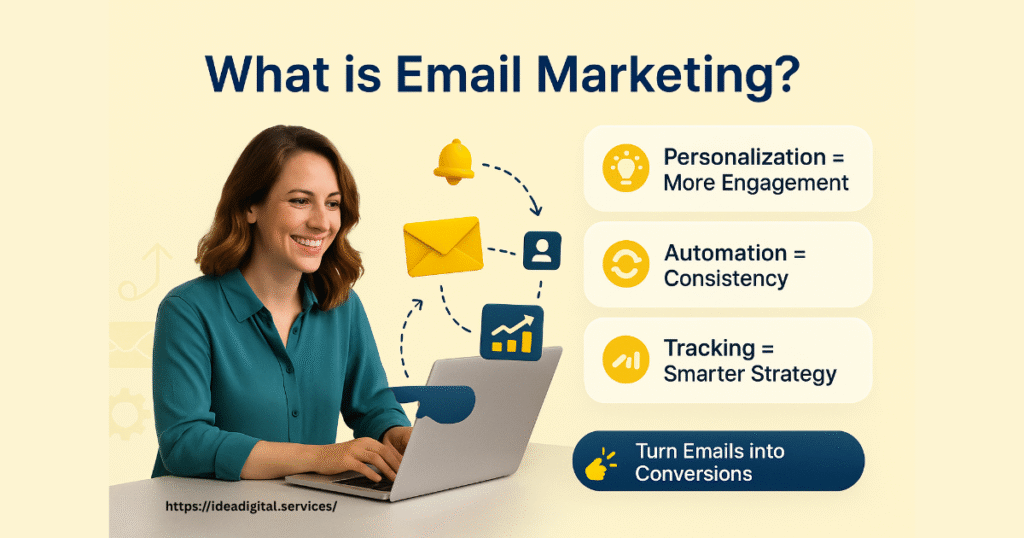
What does SEO mean?
To completely understand how email helps SEO, we need to first explain what SEO is. Search engine optimisation (SEO) is the practice of making a website easier to find on search engine results pages (SERPs). Businesses want to get organic (unpaid) traffic from people who are actively looking for information or solutions by improving the structure, content, and technological parts of their websites.
To understand what SEO means, you need to know its main parts: keyword research, on-page optimisation, establishing backlinks, making sites that load quickly, and making pages that work well on mobile devices. These things tell search engines that a website is trustworthy and useful, which can help it move up in the rankings. When used correctly, SEO not only brings in more visitors but also better visitors, those who are most likely to interact and convert.
What do SEO and email marketing have in common?
When email marketing and SEO are done separately, they don’t work as well as they could. But when you put them together, they work together to make things better for both sides. Email marketing increases the reach and engagement of information, while SEO increases the number of people who can subscribe.
SEO and email marketing work together to help brands get their message across at more than one touchpoint. For instance, you may turn blog entries that are good for SEO into newsletters, and you can use emails that do well to help you plan what to write about on your website. This synergy makes the brand more consistent, makes the user experience better, and in the end, it leads to better search ranks and more sales. A significant part of this integration is running a well-organised email marketing campaign that fits with keyword trends and what your audience wants.
How Email Marketing Helps SEO
1. Lowers the bounce rate and raises the duration of stay: Google’s algorithm looks at how long people stay on a page and how many times they leave it as signs of how good the material is. People who come to your site from email marketing are usually more interested because the content has been tailored to them. This means that people are more inclined to read, click on links, and do things, which is good for SEO.
2. Keeps Traffic Coming to New Content: Regularly publishing new blog posts or resource pages is important for SEO, but they may not get a lot of attention at first. Email marketing for small businesses is a great way to get this content out there right away, which helps Google see it as timely and useful. This can speed up the indexing process and make it work better in search results at first.
3. Brings good traffic to SEO pages: One of the best ways that email marketing helps SEO is by sending qualified visitors to web pages that have been optimised. When someone clicks on an email, they are interested in what it says and are more likely to engage with it than a random visitor from a search engine. Search engines see that the information is useful when people spend more time on it and engage with it more.
4. Gets those who have been there before to come back: Email marketing can get those who have already been to the site but didn’t buy anything to come back. These advertisements make people want to come back, which makes them seek brands more often. Search engines see brand name searches as a sign of popularity and relevancy, which can help rankings.
5. Helps get shares and backlinks: Businesses are more likely to have their high-quality material shared or linked to by others if they send it out via email. This not only brings in more visitors, but it also gives you backlinks, which are one of the most essential things that affect your SEO ranking. Getting people to forward emails or post articles on social media makes the content reach more people.
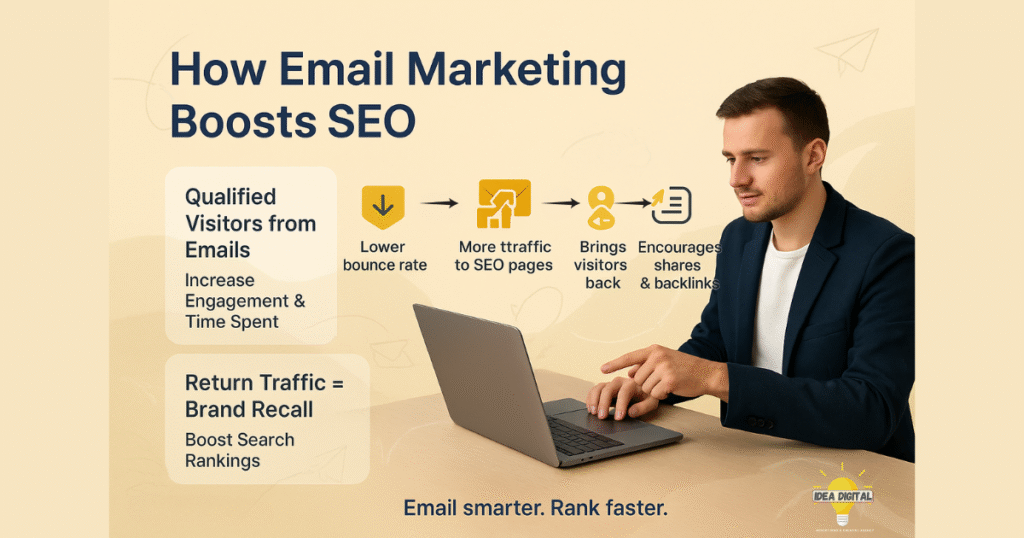
How SEO Can Make Email Marketing More Effective
1. Gives you useful things to share via email: Making good, useful content is an important part of a good SEO strategy. This information is great for email newsletters, nurturing sequences, and promotions. Businesses may use SEO content to make emails instead of just making material for emails. This way, they get the most out of both channels.
2. Keyword research is helpful. Make Email Topics: Keyword research that is based on SEO shows what people are really looking for. This information can help you write emails that are interesting to your readers, which can increase open rates and engagement. For instance, if people often look for “email subject line hacks,” writing an email on this topic makes sure it is useful and relevant.
3. Builds authority that makes emails work better: Getting high search results all the time makes your brand more trustworthy. People are more likely to open emails from a brand if they trust the content. This power leads to more people opening your emails, fewer people unsubscribing, and greater overall campaign effectiveness.
4. Boosts organic email sign-ups: Making landing pages and blog posts more search-friendly makes it more likely that people will find a site and sign up for emails on their own. Brands may expand their email list with subscribers who are truly interested in what they have to offer by using effective calls-to-action and lead magnets that are related to keywords. This is a critical part of any email list-building plan.
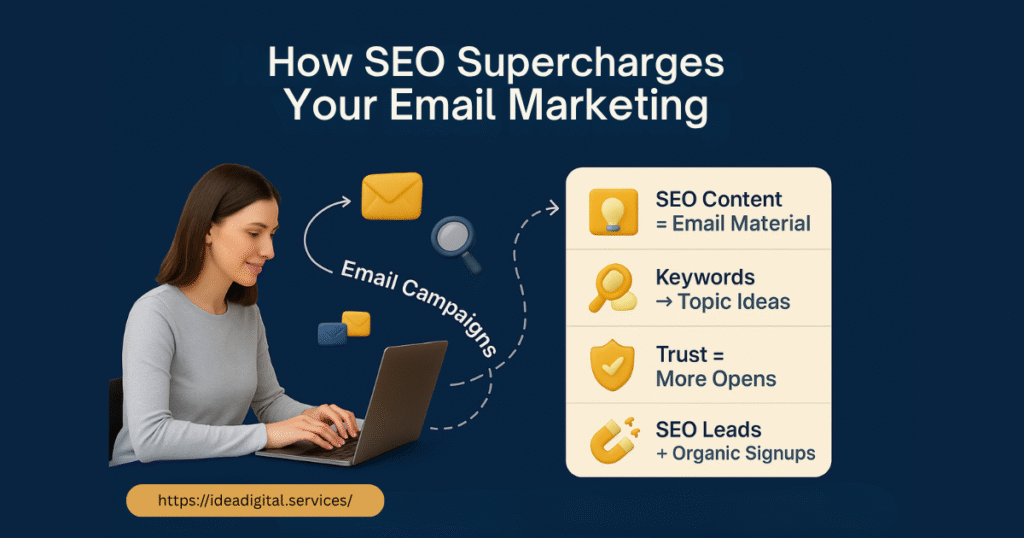
Step-by-Step: Make a Plan for SEO Email Marketing
Step 1: Set clear goals: Clear goals are the first step in any good plan. Choose whether your main goal is to get more visitors, grow your email list, market a new product, or keep customers. These goals will help in planning materials and keeping track of how well it does.
Step 2: Check Your Current SEO Content: Find content that is doing well that you could send out via email. This contains videos, instructions, tools, and blog pieces. Also, look for pages that aren’t doing well and may need more attention.
Step 3: Use SEO content in emails again: Change blog content into newsletters or drip campaigns. Use bullet points, images, or summaries to get email readers interested and send them back to the entire article.
Step 4: Make SEO pages better for getting email addresses: Put sign-up forms, pop-ups, or lead magnets in the right places on SEO pages that get a lot of traffic. This gives organic visitors a chance to sign up for your email list.
Step 5: Customise based on how people search: Use tools that link how users search with how you personalise their emails. For example, someone who reads about “best email marketing platforms” can get case studies or comparisons that are relevant to them in their inbox.
Step 6: Use UTM Parameters to Keep Track: Marketers may see how traffic moves from emails to the website by adding UTM parameters to email links. This helps you figure out which types of emails and content get the most people to open them and convert. What Are UTM Settings? UTM (Urchin Tracking Module) parameters are simple tags that are put on URLs so that analytics software may see where traffic comes from, what medium it comes from, and what campaign it comes from. They are quite important for email marketing since they help you tell the difference between traffic from different emails or campaigns.
Step 7: Keep an eye on the loop and make improvements: Keep an eye on important performance metrics, including the number of people who read your emails, click on links, bounce, and spend time on your page. Use this information to improve your email marketing plan, change your SEO keywords, and keep both channels in sync for better results.
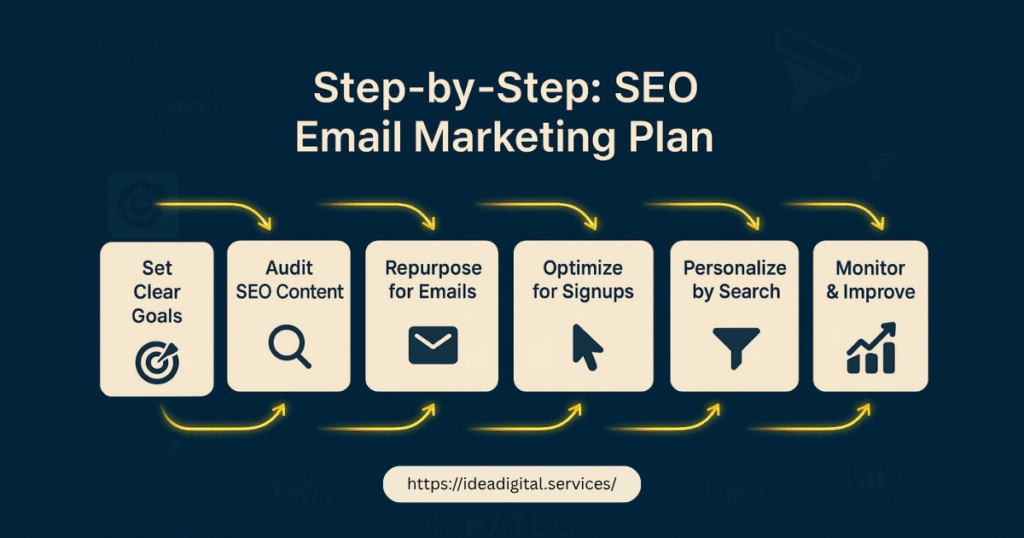
Conclusions
In today’s digital world, combining SEO with email marketing isn’t just a good idea; it’s a must for long-term, stable growth. When these two techniques work together, they make a feedback loop that brings in qualified visitors, carefully nurtures prospects, and boosts a brand’s exposure and authority across all channels. Marketers can run campaigns that always and meaningfully convert by focusing on high-quality content, growing an email list strategically, and using data from user behaviour.
If you want to get more people to open your emails, grow your audience naturally, or get more value out of the money you spend on content, combining SEO with email marketing is the way to go.
Are you ready to improve your digital strategy? Align your SEO and email marketing efforts right away, and make sure that every search and click leads to long-term engagement.
FAQ’s
How can email marketing help with SEO?
Email marketing doesn’t directly affect search engine results, but it does help SEO by sending steady traffic to optimised sites, lowering bounce rates, and promoting content sharing. All of these things improve site engagement and visibility.
Do SEO methods help email marketing work better?
Yes. SEO gives you information about how people search and what keywords are popular. This can help you plan your email content, subject lines, and segmentation techniques. This alignment makes things more relevant and boosts open and click-through rates.
What kinds of content should I use in an email marketing campaign that is focused on SEO?
Content should match what people are looking for and provide connections to blog articles, product sites, manuals, or resources that are optimised for the right keywords. The idea is to get subscribers to material that will help them both engage with it and find it.
What are the best tools for combining email marketing with SEO?
Mailchimp, HubSpot, and ConvertKit are all tools that can help you automate your email marketing. Ahrefs, SEMrush, and Google Search Console are all platforms that give you
How can I tell if my integrated SEO email marketing plan is working?
Keep an eye on SEO data like organic traffic, bounce rate, and time on page, as well as email metrics like open rate, CTR, and conversions. You can use UTM parameters in email links to see how emails affect search-based engagement and conversions.



